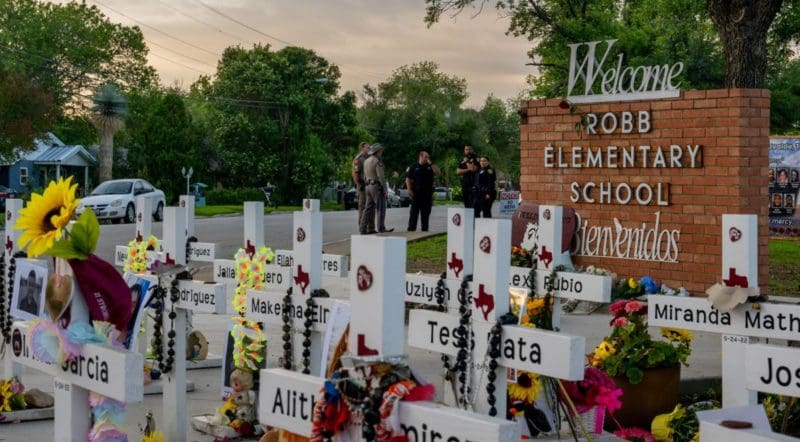
The Uvalde school massacre, a harrowing incident that unfolded at Robb Elementary School on May 24, 2022, tragically ended the lives of 19 innocent children and two devoted teachers.
Recent revelations from a comprehensive U.S. Justice Department report shed light on the catastrophic law enforcement response, underscoring the chilling reality that this tragedy could have been mitigated much sooner.
A Timeline of Tragic Inaction
The Uvalde massacre, now deeply ingrained in the nation’s collective memory, began when a gunman entered the school premises, bringing terror to what should have been a safe space for learning and growth. Law enforcement officers, numbering in the hundreds, flocked to the scene, yet, a staggering 77 minutes elapsed before the perpetrator was confronted and neutralized. This delay, marked by a series of tactical and decision-making failures, starkly contrasts the urgency required in such life-threatening situations.
The DOJ’s Damning Findings
The recently released 575-page report by the U.S. Justice Department, a document that meticulously dissects the law enforcement response, paints a picture of “cascading failures of leadership, decision-making, tactics, policy, and training.” A critical mistake, as identified in the report, was the misclassification of the situation as a barricaded suspect scenario rather than an active shooter event. This misjudgment, despite desperate pleas from children and teachers through 911 calls, significantly delayed the decisive action needed to save lives.
The Cost of Inaction
The ramifications of this delayed response were devastating. Nineteen young students, brimming with potential, and two dedicated teachers were mercilessly killed. Additionally, 17 others sustained injuries in an attack that ranks among the worst school shootings in U.S. history. The community of Uvalde, forever scarred by this event, mourns the irreplaceable loss of these lives.
A Comparison with Past Responses
The report also draws a comparison with the law enforcement response to the 2016 Pulse Nightclub massacre in Orlando. While the response in Orlando was less critically viewed, it still highlighted the need for updated training and policies. The stark difference in the assessment of these two responses underscores the unique failures in Uvalde.
The Aftermath and Search for Accountability
In the wake of the tragedy, the Uvalde school district suspended its police force, and at least five officers, including from the Texas Department of Public Safety and Uvalde’s school police chief, lost their jobs over their handling of the situation. The DOJ’s report, led by the Office of Community Oriented Policing Services, seeks to provide an independent assessment, identify lessons learned, and offer guidance for future responses to such horrific incidents.
A Community’s Quest for Answers
For the families of the victims and the Uvalde community, this report is a step toward understanding the full extent of the failures that contributed to this tragedy. It is a painful reminder of the need for competent and timely law enforcement response in the face of such threats.
Moving Forward: Lessons Learned
The Uvalde tragedy and the subsequent DOJ report serve as a stark reminder of the importance of proper training, clear leadership, and the need for an immediate and coordinated response to active shooter situations. It’s a call to action for law enforcement agencies nationwide to reassess and improve their protocols and responses to ensure that such a tragedy is never repeated.
In Memoriam
As the nation reflects on this dark chapter, we remember the lives lost and the community shattered. The memory of those who perished in the Uvalde school massacre serves as a somber reminder of the cost of inaction and the urgent need to protect our most vulnerable – our children.
